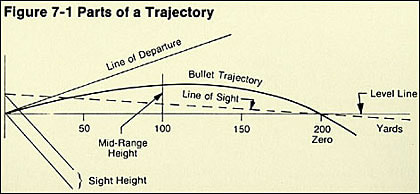|
Anyone that has fired a gun is aware of recoil. Newtons third law of motion says that for every action there is an equal and opposite reaction. This is recoil. When the trigger is pulled, combustible powder ignites within the barrel and creates over 35,000 psi which sends the projectile flying out of the front of the barrel. The reaction force is known as recoil and is absorbed through the shooters hand or shoulder.
|
|
Bullets do not fly in perfectly straight lines either. By Newtons 1st law of motion, an object in motion will stay in motion unless acted upon by an external force. There are several forces acting on a bullet once it is fired from the rifle: air resistance, gravity, and gyroscopic motion just to name a few.
|
|
Newtons second law says that acceleration is produced when a force acts on a mass, therefore larger masses need larger forces to accelerate them. The mass or weight of a bullet is defined as the bullets 'grain'. Almost all calibers come in different grain sizes. There are 437.5 grains in an ounce. For example, if you purchase a box of Springfield .30-06 165 grain cartridges, you are buying a 0.30 caliber round that weighs 165 grains (0.377 ounces). Comparing the same .30 caliber 180 grain vs. 150 grain bullet, the 180 grain is slower but has more momentum, energy, and causes more recoil. While the lighter 150 grain bullet has higher velocity but less momentum, energy and recoil.
|





